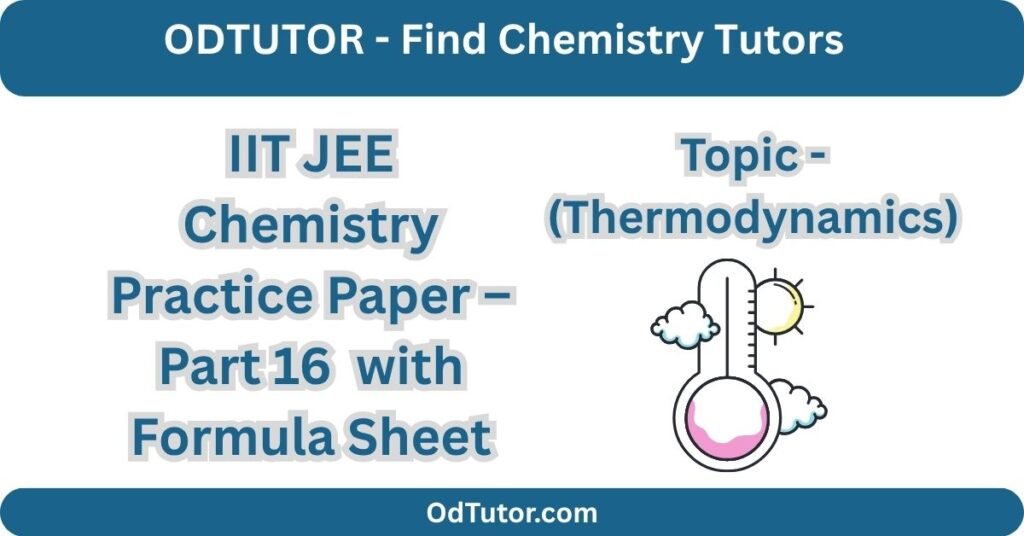Instructions: Each question carries 4 marks. Select the correct answer and click Submit to view your score, correct answers, and explanations.
IIT JEE Chemistry – Thermodynamics Summary & Formula Sheet
Thermodynamics is the branch of physical chemistry that studies energy changes accompanying physical and chemical processes. It helps us understand the direction and feasibility of reactions — an essential part of IIT JEE Chemistry.
1. Basic Terms
- System: The part of the universe under study (e.g., reacting mixture).
- Surroundings: Everything outside the system.
- Types of Systems:
- Open – exchanges both matter and energy.
- Closed – exchanges energy but not matter.
- Isolated – exchanges neither energy nor matter.
2. Thermodynamic Processes
- Isothermal: Temperature constant (ΔT = 0).
- Adiabatic: No heat exchange (q = 0).
- Isobaric: Constant pressure.
- Isochoric: Constant volume.
- Reversible: Infinitely slow, equilibrium maintained.
- Irreversible: Rapid and spontaneous, not in equilibrium.
3. First Law of Thermodynamics
Energy can neither be created nor destroyed; it can only be transformed.
ΔU = q + w
- ΔU – Change in internal energy
- q – Heat absorbed by the system
- w – Work done on the system
For ideal gas: w = –PextΔV
At constant volume: qv = ΔU
At constant pressure: qp = ΔH
4. Enthalpy (H)
H = U + PV
Change in enthalpy: ΔH = ΔU + PΔV
For chemical reactions:
ΔH = ΣHproducts – ΣHreactants
- Exothermic: ΔH < 0
- Endothermic: ΔH > 0
5. Heat Capacities
Cp – Cv = R
For n moles of gas:
ΔU = nCvΔT and ΔH = nCpΔT
6. Hess’s Law
The total enthalpy change of a reaction is the same, irrespective of the path taken.
ΔHoverall = ΣΔHindividual steps
7. Second Law of Thermodynamics
The entropy (S) of an isolated system always increases in a spontaneous process.
ΔSuniverse = ΔSsystem + ΔSsurroundings > 0
8. Gibbs Free Energy (G)
G = H – TS
Change in Gibbs energy: ΔG = ΔH – TΔS
- ΔG < 0 → Reaction is spontaneous
- ΔG = 0 → System at equilibrium
- ΔG > 0 → Non-spontaneous reaction
9. Key Relations
- ΔG° = –RT ln K (Relation between Gibbs energy and equilibrium constant)
- w = –nRT ln(V₂/V₁) (Reversible isothermal expansion of ideal gas)
Conclusion
Thermodynamics forms the backbone of physical chemistry, connecting energy, heat, and work with the spontaneity and equilibrium of reactions. By mastering concepts like internal energy (U), enthalpy (H), entropy (S), and Gibbs free energy (G), IIT JEE aspirants can predict the feasibility and direction of any chemical process — making it one of the most scoring topics in the exam.

